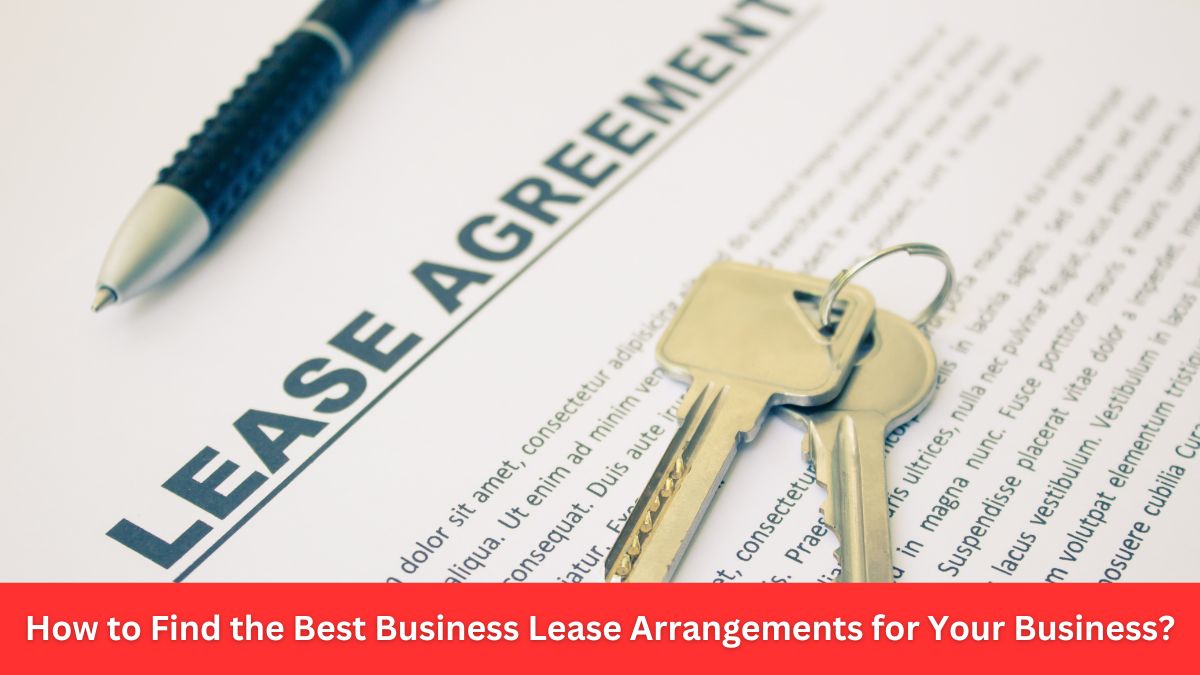Leasing is a popular option for many businesses that need equipment, office space, or vehicles but don’t want to purchase them outright. Leasing allows businesses to obtain the necessary assets without a large upfront cost and can also provide tax benefits.
However, finding the right lease arrangement can be challenging, and it’s essential to consider several factors to ensure you’re getting the best deal for your business. Here are some tips on how to find the best business lease arrangements for your business.
Understand Your Business Needs
The first step in finding the best business lease arrangement is understanding your business needs. You should clearly know the type of equipment, space, or vehicles you need to lease and for how long.
Consider the size of your business, your budget, and your goals when determining your leasing needs. Choosing a lease arrangement that meets your specific requirements and helps you achieve your business objectives is essential.
Remember ASC 842 Lease Accounting
If you follow US GAAP you’ll have to account for your leases using ASC 842 lease accounting principles. It’s a fairly new guideline laid down by the FASB. Whether you use an accountant or accounting software or do it yourself you need to make sure you’re following ASC 842. Essentially, the leases in question need to be on the balance sheet whereas before, they didn’t need to be. You must get the accounting for leases right because they’re usually worth quite a lot and small errors can cost you a lot of money. Remember, follow ASC 842, use lease accounting software or an accountant and do your best to get it right.
Research Your Options
Once you’ve identified your business leasing needs, it’s time to research your options. Many leasing companies and options are available, so it’s essential to research and compare your options.
Look for leasing companies specializing in your industry or equipment type, and check their reputation and reviews. Consider the lease terms, interest rates, and fees when comparing your options.
Choose the Right Lease Type
Several types of lease arrangements are available, including operating leases, finance leases, and capital leases. Each type of lease has its benefits and drawbacks, so choosing the right type of lease for your business needs is essential.
Operating leases are generally shorter-term and provide more flexibility, while finance leases are longer-term and provide the option to purchase the equipment at the end of the lease. Capital leases are similar to finance leases but are considered a purchase rather than a lease for tax purposes.
Negotiate Lease Terms
Lease terms can be negotiable, so it’s essential to negotiate the best terms for your business. Consider negotiating the lease term, interest rate, fees, and any other terms that may affect your lease arrangement.
If you’re leasing a significant asset, such as office space or equipment, consider hiring a lawyer to review the lease agreement and negotiate on your behalf.
Consider Tax Implications
Leasing can benefit businesses, but it’s essential to consider the tax implications when choosing a lease arrangement. Operating leases are generally considered an expense and can be fully deducted from your business taxes.
In contrast, finance and capital leases may be considered a purchase and may provide depreciation and interest deductions. Consult a tax professional to determine the best lease arrangement for your tax situation.
Read the Fine Print
Before signing a lease agreement, it’s essential to read the fine print and understand all the terms and conditions. Ensure you understand the lease term, payment schedule, interest rate, and associated fees.
You should also understand your responsibilities under the lease, such as maintenance and repair obligations. Don’t hesitate to ask questions or negotiate terms before signing the lease agreement.
Plan for the End of the Lease
When leasing assets, it’s essential to plan for the end of the lease. Consider what will happen when the lease is up, and you must return the equipment or space. Ensure you understand your options for renewing the lease, purchasing the equipment, or returning it.
If you’re leasing equipment, consider the equipment’s residual value and whether it will be worth purchasing at the end of the lease term.
Final Thoughts
Leasing can be an excellent option for businesses needing equipment, office space, or vehicles but not wanting to purchase them outright.
By understanding your business needs, researching your options, choosing the right lease type, negotiating lease terms, considering tax implications, reading the fine print, and planning for the end of the lease, you can find the best business lease arrangement.
Choosing a lease arrangement that meets your specific requirements, provides flexibility and tax benefits, and helps you achieve your business objectives is essential. With some planning and research, you can find the best lease arrangement for your business and set yourself up for success.
